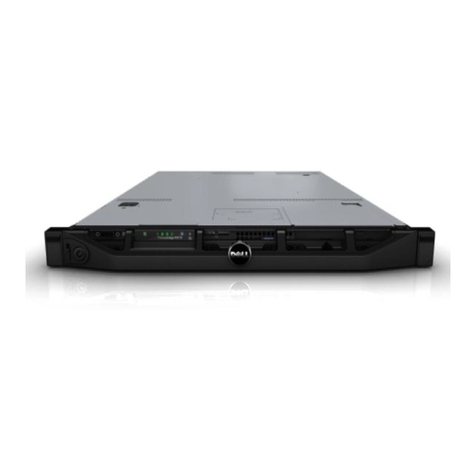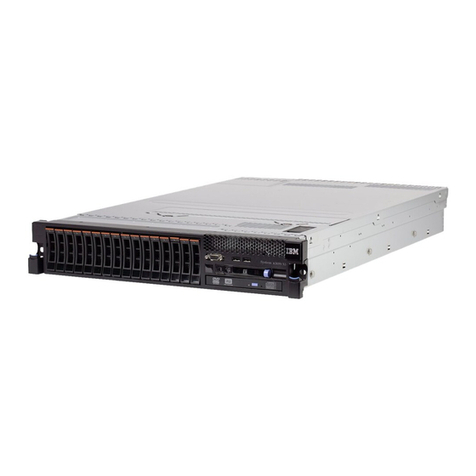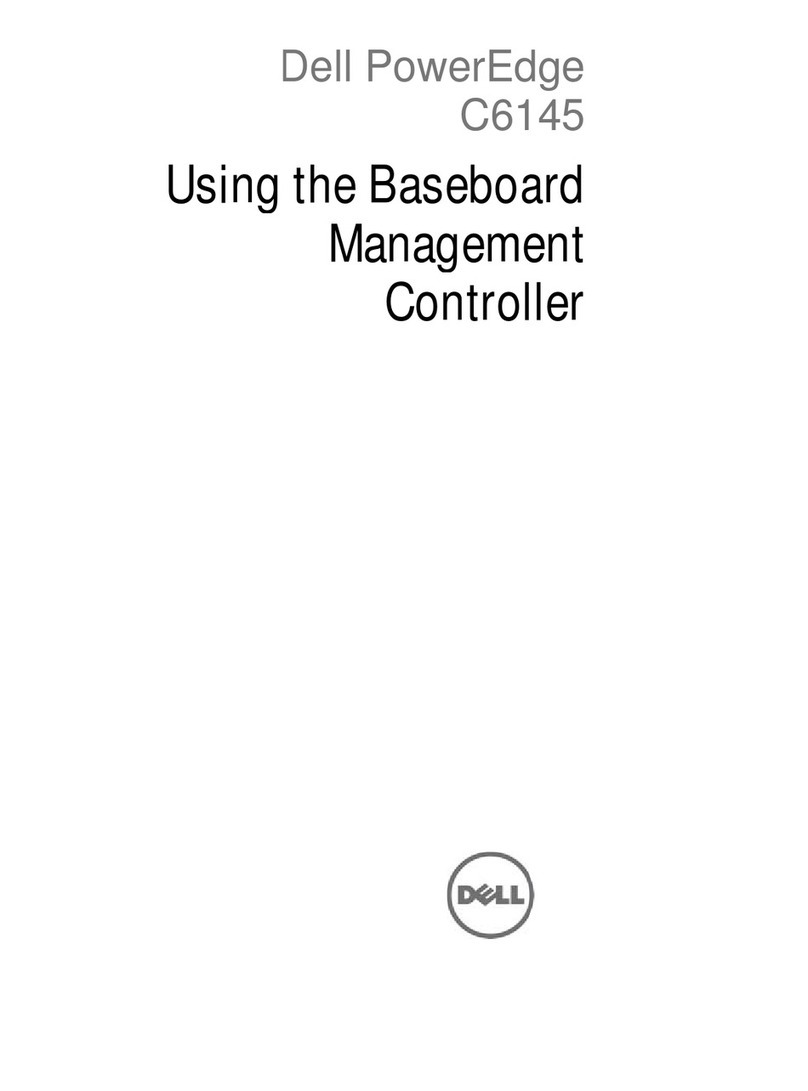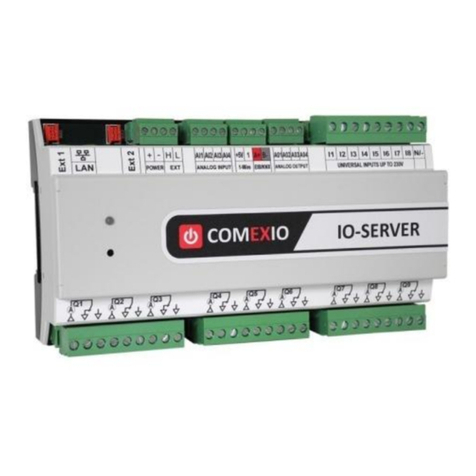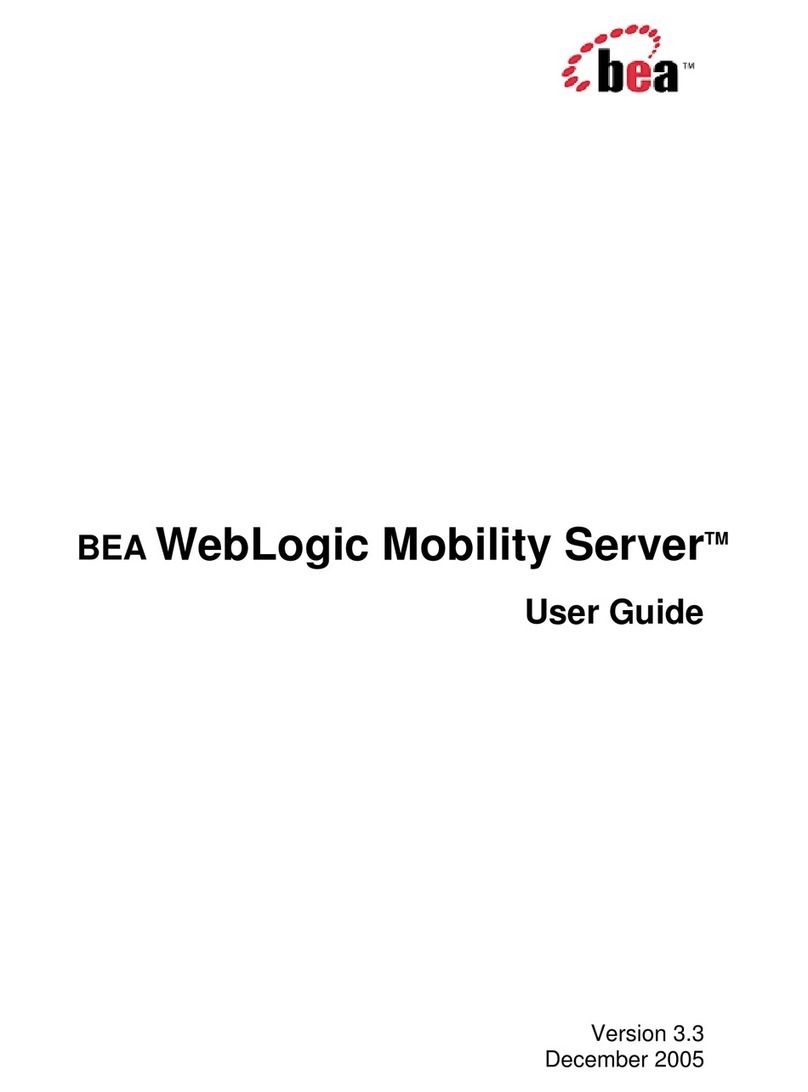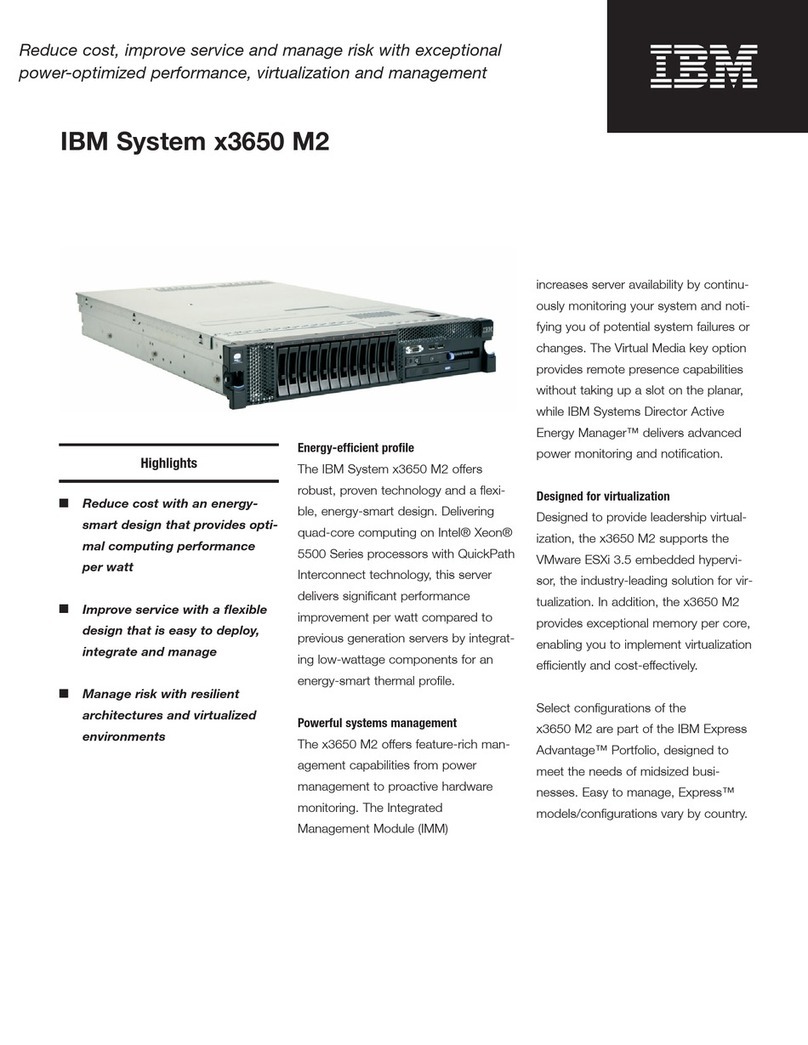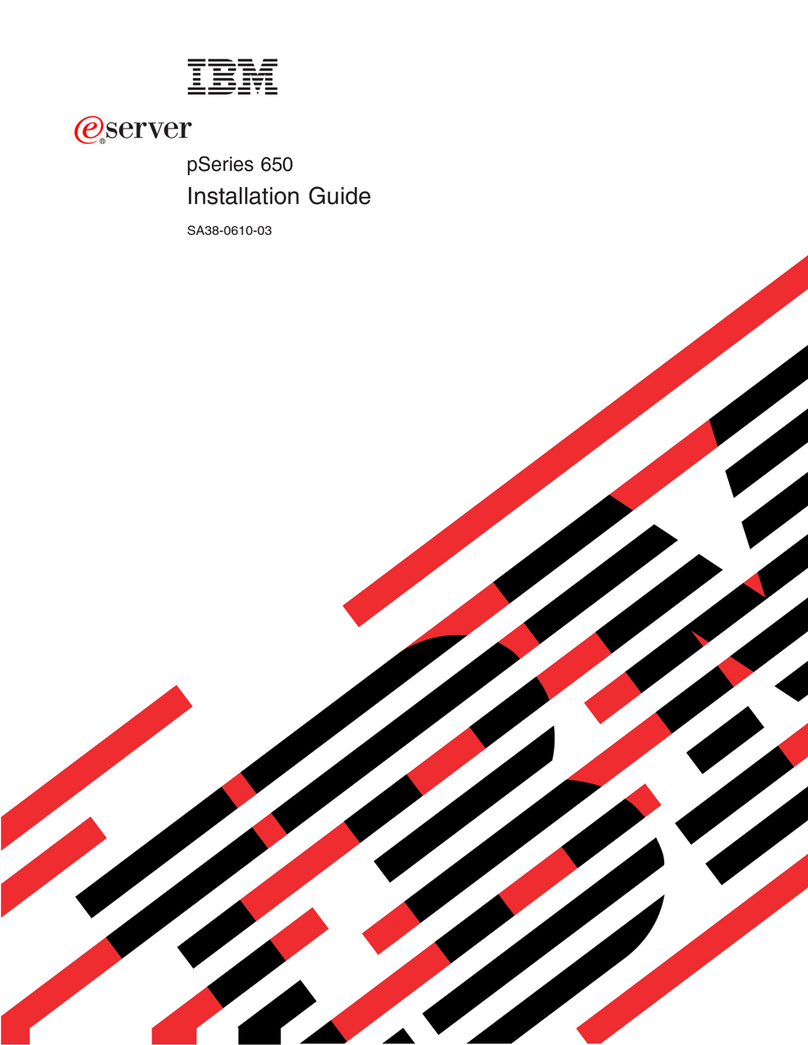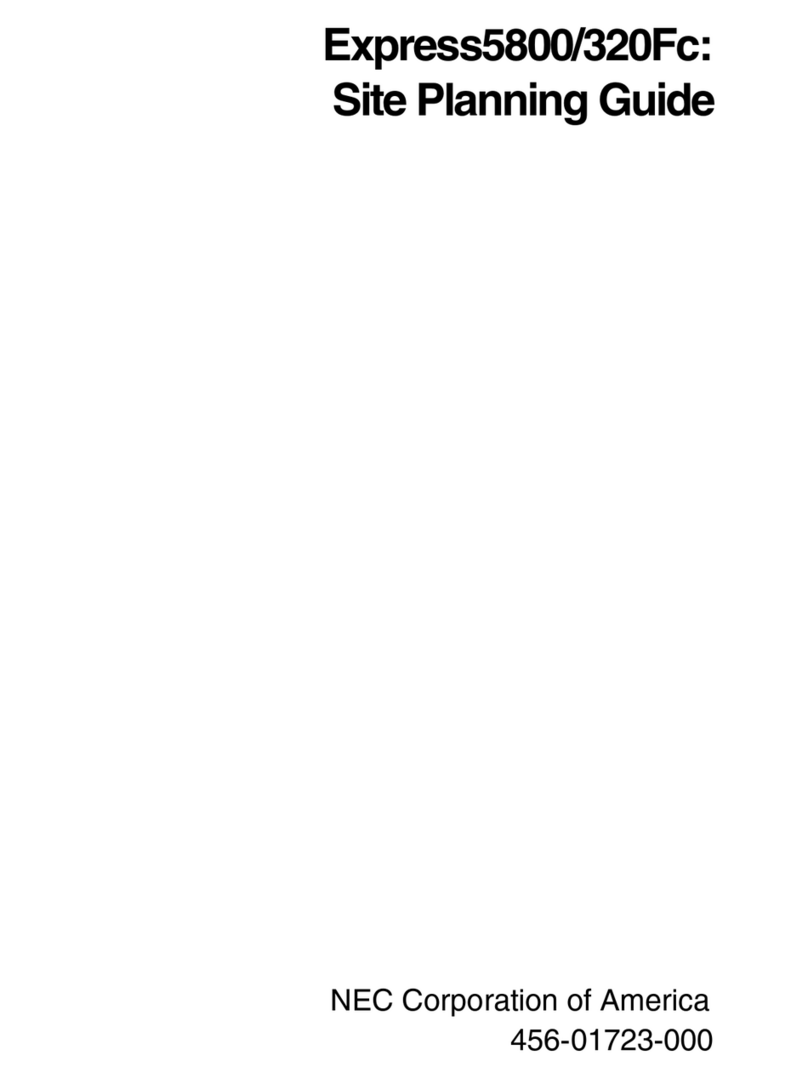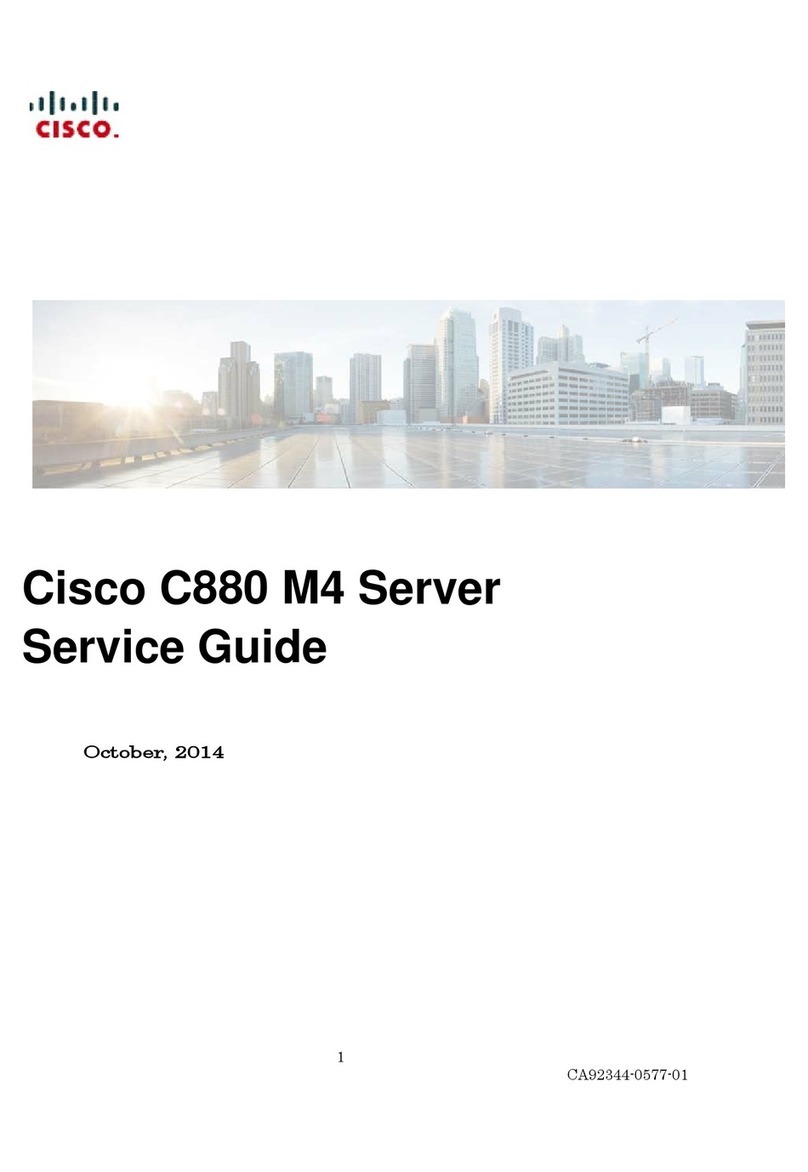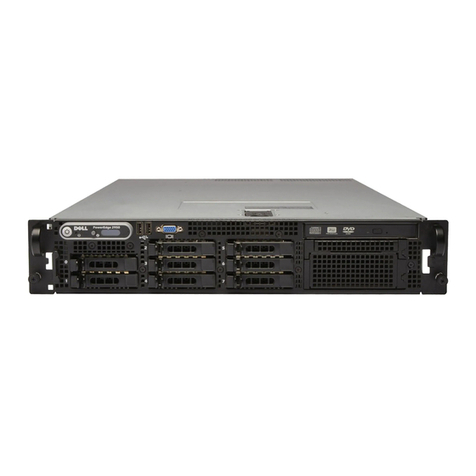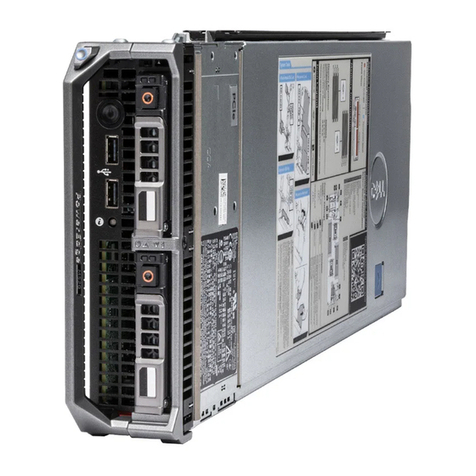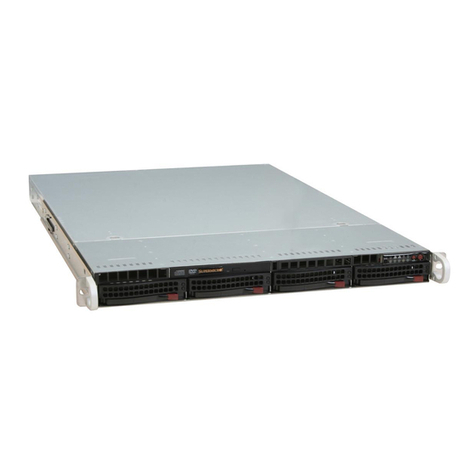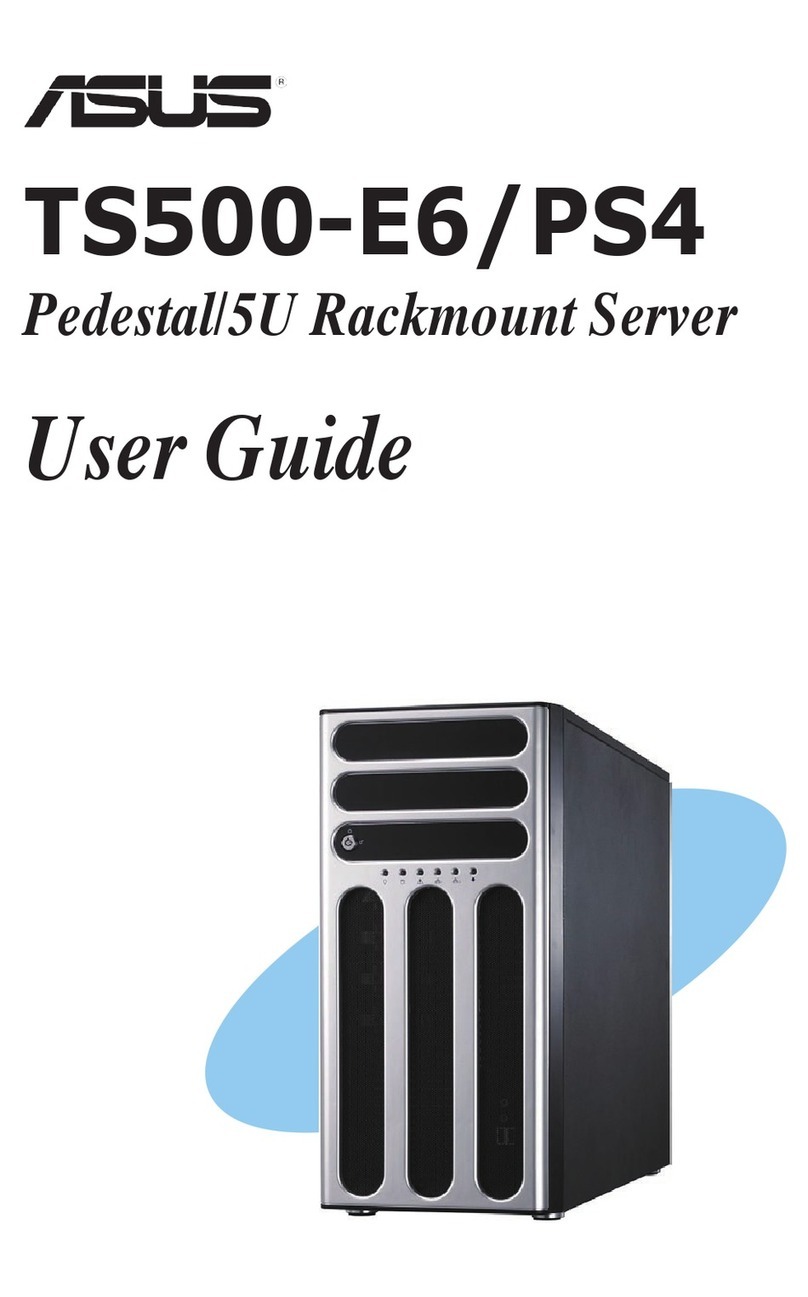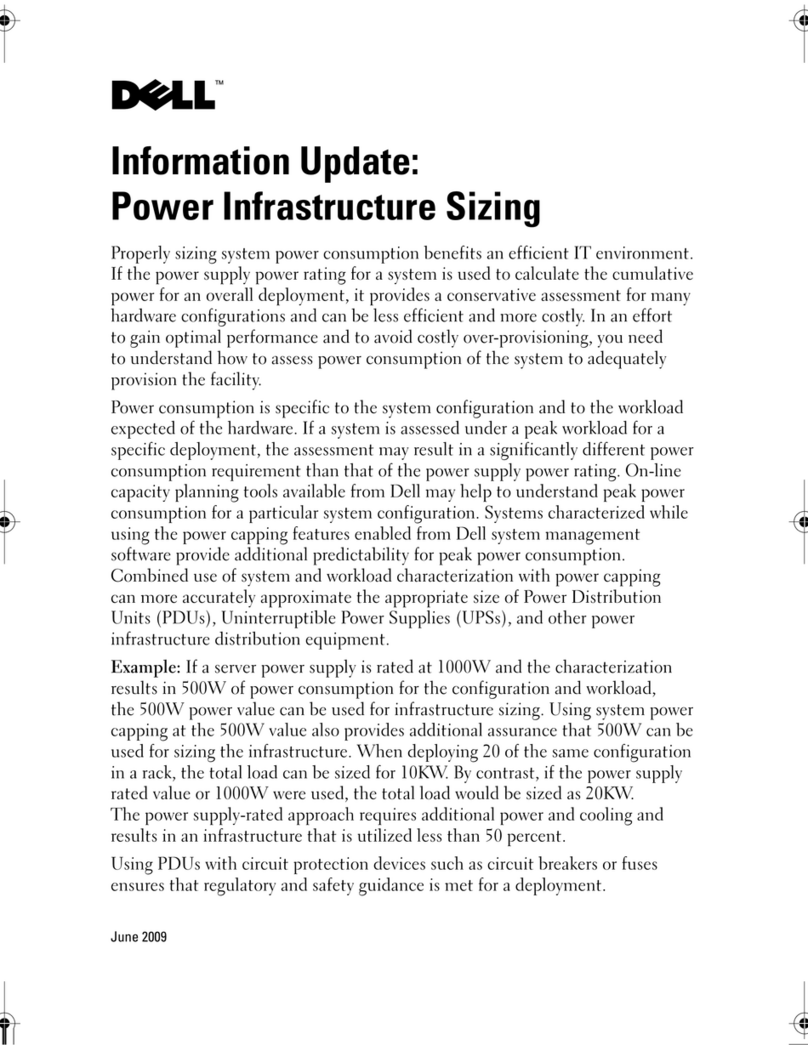Incon TS-550 evo User manual

TS-550/5000 evo®
Fuel Management System
Installation Guide
Franklin Fueling Systems • 3760 Marsh Rd. • Madison, WI 53718 USA
Tel: +1 608 838 8786 • 800 225 9787 • Fax: +1 608 838 6433 • www.franklinfueling.com
Manual # Revision Date Changes from Previous Revision
000-2170 D June 2019 Added new control drawings 000-1722_015_01_1814098 and
000-1722_015_02_1446163

2
Important Safety Messages
Franklin Fueling Systems equipment is designed to be installed in association with volatile hydrocarbon liquids such as
gasoline and diesel fuel. Installing or working on this equipment means working in an environment in which these highly
ammable liquids may be present. Working in such a hazardous environment presents a risk of severe injury or death
if these instructions and standard industry practices are not followed. Read and follow all instructions thoroughly before
installing or working on this, or any other related, equipment.
As you read this guide, please be aware of the following symbols and their meanings:
This symbol identies a warning. A warning sign will appear in the text of this document when a potentially
hazardous situation may arise if the instructions that follow are not adhered to closely. A potentially hazardous
situation may involve the possibility of severe bodily harm or even death.
This is a caution symbol. A caution sign will appear in the text of this document when a potentially hazardous
environmental situation may arise if the instructions that follow are not adhered to closely. A potentially
hazardous environmental situation may involve the leakage of fuel from equipment that could severely harm
the environment.
This symbol identies an electrical danger. An electrical danger sign will appear in the text of this document
when a potentially hazardous situation involving large amounts of electricity may arise if the instructions that
follow are not adhered to closely. A potentially hazardous situation may involve the possibility of electrocution,
severe bodily harm, or even death.
Warning
Danger
Caution
Follow all applicable codes governing the installation and servicing of this product and the
entire system. Always lock out and tag electrical circuit breakers while installing or servicing
this equipment and any related equipment. A potentially lethal electrical shock hazard and the
possibility of an explosion or re from a spark can result if the electrical circuit breakers are
accidentally turned on during installation or servicing. Please refer to the Installation and Owner’s
Manual for this equipment, and the appropriate documentation for any other related equipment, for
complete installation and safety information.
Follow all federal, state and local laws governing the installation of this product and its associated
systems. When no other regulations apply, follow NFPA codes 30, 30A and 70 from the National Fire
Protection Association. Failure to follow these codes could result in severe injury, death, serious
property damage and/or environmental contamination.
Always secure the work area from moving vehicles. The equipment in this manual is usually
mounted underground, so reduced visibility puts service personnel working on this equipment in
danger from moving vehicles entering the work area. To help eliminate these unsafe conditions,
secure the area by using a service truck to block access to the work environment, or by using any
other reasonable means available to ensure the safety of service personnel.
When the Fuel Management System system is used to monitor tanks containing gasoline or other
ammable substances, you may create an explosion hazard if you do not follow the requirements in
this manual carefully.
All wiring must enter the console’s enclosure through the designated knockouts. An explosion
hazard may result if other openings are used.
All wiring from probes or sensors to the console must be run in conduit separate from all other
wiring. Failure to do so will create an explosion hazard.
Substituting components could impair intrinsic safety. TS-550/5000 evo consoles are intrinsically
safe for sensors installed in – Class I, Division 1, Group D – hazardous locations. Substitution of
components could make the energy limiting circuitry in the system ineffective and could cause an
explosion hazard. Repairs to a TS-550/5000 evo console or attached components should only be
performed by a qualied, factory-trained technician.
Warning
Warning
Warning
Warning
Warning
Warning
Warning

3
Copyright ©2011 by Franklin Fueling Systems (FFS). No part of this publication may be reproduced in any form without the prior written consent of FFS.
All rights reserved.
Notice
Franklin Fueling Systems reserves the right to change this document and specications at any time without notice.
Franklin Fueling Systems makes no expressed or implied warranty with regard to the contents of this manual. Franklin
Fueling Systems assumes no liability for errors or omissions, or for any damages, direct or consequential, that may result
from the use of this document or the equipment that it describes.
Trademarks
INCON®, TS-5 Series®, TS-550 evo, TS-5000 evo®, System Sentinel®, SCALD®, Brite®, BriteBox®, BriteBus®, and
BriteSensors®are registered trademarks of Intelligent Controls. All brand and product names are trademarks or registered
trademarks of their respective companies.
Inspection of Materials
Visually inspect all components for defects or damage prior to installation. If any defect or damage is found, do not use the
product and contact Franklin Fueling Systems for further assistance.
Return Shipping Charges
Franklin Fueling Systems will not accept shipments of returned products without a Return Material Authorization (RMA)
number. RMAs are obtained by contacting Franklin Fueling Systems’s Technical Service Division — NO RMAs will be
given without the unit’s serial number(s). Returned material remains the property of the buyer until replaced or repaired.
Under Warranty
Franklin Fueling Systems will pay all freight and insurance charges for all “Under-Warranty” RMAs.
Non-Warranty
It is the buyer’s responsibility to prepay all freight and insurance charges for “Non-Warranty” RMAs.
Refer to the Warranty section at the end of this manual for all warranty issues.
Contacting Franklin Fueling Systems (FFS)
Please feel free to contact us by mail at:
Franklin Fueling Systems
3760 Marsh Rd.
Madison, WI 53718 USA
Or contact us by phone, fax or e-mail:
Fax: 1 608 838 6433 [email protected]
Tel: US & Canada 1 800 225 9787
Tel: México 001 800 738 7610
Tel: Europa +49 6571 105 380
Ofce Hours: 8am to 5pm CST - Monday through Friday
Please visit our web site at www.franklinfueling.com

4
Contents
Important Safety Messages ...................................................................................................... 2
Notice........................................................................................................................................3
Trademarks...............................................................................................................................3
Inspection of Materials.............................................................................................................. 3
Return Shipping Charges................................................................................................................ 3
Contacting Franklin Fueling Systems (FFS).................................................................................... 3
Introduction ...............................................................................................................................5
Certied Installer/Service Person ................................................................................................... 5
Station Owner/Operator . ................................................................................................................ 5
Abbreviations & Acronyms. ............................................................................................................. 5
Related Documentation................................................................................................................... 5
Product Description .................................................................................................................. 5
Standard Installation Materials ................................................................................................. 7
Console Installation .................................................................................................................. 8
Console Location............................................................................................................................. 8
Mounting the Console. .................................................................................................................... 8
TS-550/5000 evo Dimensions and Operating Parameters........................................................ 9
Communication Ports ............................................................................................................... 10
RS-232 Communication Connectors............................................................................................... 10
Wiring the Console & Modules ................................................................................................. 11
Non-Intrinsically Safe Module Wiring........................................................................................ 11
Controller Module (CM)................................................................................................................... 12
Power Supply Module (PS). ............................................................................................................ 13
Relay Output Wiring (optional). ....................................................................................................... 15
Emergency Generator Applications (optional)................................................................................. 15
Relay Module (RLY). ....................................................................................................................... 17
AC Input Module (ACI). ................................................................................................................... 18
Input/Output Module (IO)................................................................................................................. 19
10 Amp Relay Module (10ARLY)..................................................................................................... 20
4-20mA EXP Analog Input Module (420EXP). ................................................................................ 21
Intrinsically Safe Module Wiring................................................................................................ 22
Probe Module (PRB). ...................................................................................................................... 23
2-Wire Sensor Module (2WSNS). ................................................................................................... 24
3-Wire Sensor Module (3WSNS). ................................................................................................... 25
4-20mA Analog Input Module (420IB). ............................................................................................ 26
Control Drawing ........................................................................................................................27
Warranty ................................................................................................................................... 29
Warranty Registration...................................................................................................................... 29
Specications............................................................................................................................30

5
Introduction
This manual contains installation and site preparation instructions for Franklin Fueling Systems’
TS-550 evo and TS-5000evo consoles. Overall safety issues, troubleshooting information, warranty, service, and return
policies, as dened in this manual, must be followed.
Please read this entire manual carefully. Failure to follow the instructions in this manual may result in faulty operation,
equipment damage, injury or death. This equipment should only be serviced by an installer certied by Franklin Fueling
Systems.
Certied Installer/Service Person
O
nly an Franklin Fueling Systems certied installer or service person is allowed to access both the user interface keypad
and areas internal to the TS-550 / 5000evo console.
Station Owner/Operator
The station owner or operator of the TS-550 / 5000evo console is only allowed to access the user interface keypad.
Access to areas internal to the console is strictly prohibited.
Abbreviations & Acronyms
10ARLY - 10 Amp Relay Module
2WSNS - 2-Wire Sensor Module (Intrinsically Safe)
3WSNS - 3-Wire Sensor Module (Intrinsically Safe)
420EXP - 4-20 mA Explosion-proof module
ACI - AC Input Module
420IB - 4-20mA Analog Input Module (Intrinsically Safe)
AST - Aboveground Storage Tank
ATG - Automatic Tank Gauge
CM - Controller Module
DIM - Dispenser Interface Module
FMS - Fuel Management Systems
IO - Input / Output module
IS - Intrinsically Safe
LON - LonWorks Interface Module
PC - Personal Computer
PRB - Probe Module (Intrinsically Safe)
PS - Power Supply Module
RLY - Relay Module
SCM - Secondary Containment Monitoring
TPI - Turbine Pump Interface
EVO-EXPC - 11 Slot Expansion Console
EVO-EXPC2 - 6 Slot Expansion Console
UST - Underground Storage Tank
Related Documentation
The system operation and programming instructions, troubleshooting guide and console maintenance manual are
provided for your use in separate documents. Detailed installation and testing instructions for each type of leak detection
sensor are present in the relevant manual, and, likewise, the installation, testing, and programming of various upgrade kits
and optional accessories are also contained in separate manuals, addenda or in one of this document’s appendixes.
Product Description
The TS-550/5000 evo is a modular, automatic, continuous monitoring system that uses plug-in modules to perform a wide
variety of functions. From fuel management, monitoring, and / or control functions. The TS-550/5000 evo with its plug-in
modules allows you to customize the system to meet your needs. Purchase only those functions that you require, and
expand your system later for greater capabilities.
The TS-550 / 5000 evo’s enhanced processor and additional memory on the CM (Controller Module) along with the
exibility of the modular design allows for peak performance while monitoring multiple systems. The TS-550 / 5000 evo
can easily monitor all of your tanks, lines, sumps, and secondary containments.
The TS-550 / 5000evo console comes standard with a Controller Module (CM), Power Supply Module (PS), and a color
LCD display and these features:

6
• Generates reports automatically in response to preset / programmed conditions and alarms
• Provides audio-visual annunciation when an alarm or warning condition exists
• Performs inventory monitoring
• Is able to print reports on a compatible external Hewlett-Packard Printer
• Can communicate via Ethernet, RS-232, RS-485, or an optional internal fax/modem.
The TS-550/5000 evo console optionally:
• The TS-550evo has six (6) open slots for additional modules that can be used to expand its capabilities and the
TS-5000evo has 11 slots.
• Can support a combination of up to:
• 36 Probes (or three Probe Modules)
• 36 2-wire sensors (or three 2-Wire Sensor Modules)
• 24 3-wire or 2-wire sensors (or three 3-wire Sensor Modules)
• 24 relay outputs (or three Relay Modules)
• 24 4-20mA inputs (or three 4-20ma Input Modules)
• 36 AC inputs (or three AC Input Modules)
• 12 4-20mA outputs & 24 AC/DC Inputs (or three Input & Output Modules)
TS-550 evo Example Station:
If your station has 8 Submersible Pumps, 12 Tanks, 8 Lines and 24 Sensors, you could control all of it with your FFS TS-
550 evo and six plug-in modules: a Relay Module, a Probe Module, an Analog Input Module, an AC Input Module and two
Sensor Modules.
TS-5000 evo Example Station
If your station has 16 Submersible Pumps, 24 Tanks, 16 lines, and 36 sensors you could control all of it with your FFS TS-
5000 evo and nine plug-in modules: two Relay Modules, two Probe Modules, two Analog Input Modules and two AC Input
Modules, and three Sensor Modules

7
Standard Installation Materials
Recommended standard materials should be selected and installed per all applicable local, state and federal codes
governing the installation of this product and its associated systems. Please see the corresponding console / module
wiring section or the associated devices section of this manual for complete installation details.
Cables Required for Liquid Level Probes, and 4-20 mA Sensors
Use cables and wires compliant with national and local codes. Franklin Fueling Systems recommends using the types of
cable shown below up to a recommended length of:
• Belden No. 87760 87760 (0.15" or 3.048 mm OD) to 260 feet (80 m)
• Belden No. 87761* (0.12" or 3.048 mm OD) to 400 feet (120 m)
• Belden No. 89182* (0.31" or 7.874 mm OD) to 1500 feet (450 m)
Note: An asterisk (*) denotes a cable that may be ordered from Franklin Fueling Systems.
Note: Conductors of different intrinsically safe (IS) circuits may be run together within the same conduit, and, when they
do, they should have at least .01 inches (.25 mm) of insulation.
Cable or Wire for 2-Wire or 3-Wire Sensors
2-wire or 3-wire sensor wire (type THHN, TFFN, or THWN, gas and oil resistant, 18 AWG minimum, 1500 feet max. wire
run length) can be used when enclosed within rigid metal conduit from the sensor to the console.
Leak detection sensor cable is required when NOT run through rigid metal conduit. Refer to the Direct Burial Cable –
Installation Manual (P/N 000-1041) for further information. See below for cable types and descriptions:
Alpha 58411 (Franklin Fueling Systems P/N 600-0062)
Two conductor cable for standard, 2 conductor leak detection sensors (0.114 inch (2.9 mm) O.D.)
Wire required for the TS-550/5000evo Console
• 3 conductors: Power – 14 GA to 12 GA Max. – Black, White, and Green
• 1 conductors: Safety Ground – 12 AWG Green (2 may be required in some locations)
• As required conductors: Accessories – Type THHN, TFFN, or THWN, 18 AWG minimum
Circuit Breaker
20 Amp — providing power only for the TS-550/5000evo console, one required per console
Note: Do not run other non-intrinsically safe wiring within the I.S. pull box.
Weatherproof Junction Boxes
Minimum 16 cubic inch (406.4 cubic mm) weatherproof junction box, cover, and cover gasket for the manholes of:
liquid level probes and leak detection sensors. Also use ¾ to ½ inch (12.7 mm to 19.05 mm) bushings for probe/sensor
compression ttings.
Use a weatherproof metal pull box for combining several circuits that will run into the TS-550 / 5000 evo console through
one or more conduits. Use a separate weatherproof metal pull box to combine intrinsically safe (IS) liquid level probe and
leak detection sensor wiring. Do not run other non-intrinsically safe wiring within the IS pull box. Run ½ or ¾ inch (12.7
mm or 19.05 mm) IS probe or sensor conduit from the manholes to the IS pull box, and then run up to four ½ or ¾ inch
(12.7 mm or 19.05 mm) conduits to the console’s IS conduit knockouts.
Conduit
Rigid metal conduit (RMC) - male NPT threaded: use ½ or ¾ inch (12.7 mm or 19.05 mm) for IS probe and sensor wiring
to the console (from the manholes, use ½ or ¾ inch conduit), and use ½ or ¾ inch (12.7 mm or 19.05 mm) for non-
intrinsically safe accessories and power wiring.
Use conduit hardware that is appropriate for the installation and meets local, state and federal requirements.
Splice Connector Kits Must Be Used — Warranty Requirement
Use the Franklin Fueling Systems-approved, moisture-resistant, no-strip splice connectors for liquid level probe and leak
detection sensor wires. You may order the TSP-KW30, which contains 30 of the Franklin Fueling Systems-approved,
moisture-resistant connectors.
Using moisture resistant splice connectors will:
• Reduce/eliminate corrosion of the wire connections from repeated exposure to water condensation, which causes
eventual signal loss and system failure.
• Reduce/eliminate equipment damage from water ooding around the connectors, which causes short-circuit damage.

8
Thread Sealant (UL Classied)
Use a non-hardening, “stay-soft,” thread sealant, or equivalent, to seal and waterproof all tank riser pipe threads. In
addition, the thread sealant (or “pipe dope” as it is commonly known) should al so be chemically non-reactive to the
product in the tank(s). Apply thread sealant to seal/waterproof all outdoor electrical conduit tting threads including the
hole plugs at the weatherproof junction boxes.
Riser Pipes
ANSI Schedule 40 (or chemically non-reactive) – 4 inch (101.6 mm) (8 NPT) riser pipes for liquid level probes. See the
appropriate leak detection sensor manual for information on required riser pipes and riser cap adapters.
Probe Installation Kit(s)
See the TSP-LL2’s installation instructions that came with the probe for the items included with the TSP-K4A standard
probe installation kit. For chemical applications, see the TSP-LL2’s installation instructions for the
TSP -K4AS stainless steel riser cap adapter kit and the TSP-SSP stainless steel product oat.
TSP-LL2 Probe Floats
• Floats for 4 inch (101.6 mm) riser pipes, order: TSP-IGF4 for gasoline applications or TSP-IDF4 for diesel and fuel oil
• Floats for 2 inch (50.8 mm) riser pipes, order: TSP-IGF2 for gasoline, TSP-IDF2 for diesel and fuel oils, or TSP-SSP
stainless steel oat for chemical products
Manufacturer’s Tank Chart for Each Tank
The manufacturer’s Tank Chart and other documentation will be used for installation and programming, and possibly for
future reference. Keep this information — do not discard it.
Console Installation
Console Location
The location that you select to install the console must be indoors in an area classied as non-hazardous (see the console
specications table at the beginning of the Wiring the Console & Modules chapter for further information). To get the
maximum benet from this system, install the console where personnel can easily make use of it; mount it at eye level for
operator convenience. Mount the console level on a vertical surface between 2 feet (0.6 m) and 6 feet (1.9 m) high using
the appropriate fasteners. For European applications, the console must be located in a pollution degree 2 environment per
IEC60664.
Mounting the Console
Warning The TS-550 / 5000 evo consoles must be mounted in a location where explosive or
ammable vapors are not present, otherwise an explosion hazard will be created which
can result in severe injury, death, serious property damage and/or environmental
contamination.
Warning Leave a minimum of two inches (5.1 cm) of space around the console open to allow for
ventilation, communication port connections, conduit and wiring. If the ventilation louvers
located on the sides of the TS-550/5000 evo are obstructed, the unit may overheat and
stop functioning as intended.
Four mounting tabs are available on the outside corners of the console. Select fasteners that have sufcient load carrying
capacity and which are appropriate for wall construction – a fully equipped TS-550 / 5000 evo console can weigh as much
as 40 pounds (18 kg), so make sure that your fasteners (and mounting surface) can adequately support that much weight.
In addition, plan ahead to make sure that there is enough room around the console for: conduit coming into the unit,
communication port connections, possible incoming probe or sensor wiring, and for the console door to fully open for easy
access.
Note: For questions concerning standard installation materials to be used for the TS-550 / 5000 evo console, please refer
to the Standard Installation Materials section of this manual.

9
TS-550/5000 evo Dimensions and Operating Parameters
The TS-550/5000 evo has conduit knockouts and communication ports located on the bottom of the unit. Use the diagram
below to help you mount the console appropriately.
Figure 1: TS-550 evo and TS-5000 evo Dimensions
Console Operating Parameters
Line Voltage: 115/230 V~ +15%, -10%
Frequency & Power: 50/60 Hz, 150 W maximum
Storage Temp.: -20° to 60° C (-4° to 140° F)
Operating Temp.: 0° to 40° C (32° to 104° F)
Operating Humidity: 0 to 95%, non-condensing
Cleaning: Cloth or sponge slightly dampened in mild
detergent
Splash Resistance: Not to be exposed to direct spray, splash or drips
Location: Indoors in an ofce or in a non-hazardous
pollution degree 2 environment per IEC60664

10
Communication Ports
The TS-550 / 5000 evo console has several communication ports that can be used to communicate with various devices.
The communication ports can be used for a wide variety of applications: to connect the console to a computer network, to
print reports on an external printer or to fax reports via the optional internal fax/modem. Please refer to the table below for
a more complete listing of the ports and their associated devices.
Port Connector Type Devices Module
RS-232 Comm 1 DB9 Female Local PC (preferred in Comm 1) Controller
RS-232 Comm 2 DB9 Male POS Terminal, External Modem, External ATG to TS-
EMS or Local PC with a null-modem cable Power Supply
Ethernet RJ-45 Local Network Controller
USB 1 Type A External Hewlett-Packard Printer Controller
USB 2 Type A External Hewlett-Packard Printer Controller
Fax/Modem RJ-11 Phone Line (requires an optional fax/modem) Controller
RS-485/TPI 4 Pin Pluggable Terminal Block, 0.2"
(5.08 mm) LS TS-DIM (external) & FE Petro Smart Controllers Power Supply
Bus Extension
(CAN)
3 Pin Pluggable Terminal Block,
0.15" (3.81 mm) LS EVO-EXPC and EVO-EXPC2 Power Supply
RS-422/232 & Current Loop DB9 Male Dispenser Distribution Box (Dbox) Dispenser Interface
LON 2 Pin Pluggable Terminal Block, 0.2"
(5.08 mm) LS IFSF Network LON Interface
COMM 2BUS EXT
CAN H
CAN L
GND
TPI RS-485
COMM 1USBETHERNETHORN
FAX/MODEM
NON-INTRINSICALLY SAFE WIRING ONLY!
FOR USE ONLY WITH EQUIPMENT SPECIFIED
IN THE INSTALLATION INSTRUCTIONS
A
B
GND
+
—
Figure 2: View of Communication Ports
Note:
The onboard TS-DIMIB (Dispenser Interface Module) and the TS-LON (IFSF protocol Interface Module) are optional
daughterboards that attach to the Power Supply Module. Only one daughterboard can be used in a system.
Note: Either the Current Loop or RS-422/232 connector will be used to connect to a dispenser distribution box (Dbox)
depending on the manufacturer’s settings.
RS-232 Communication Connectors
Two connectors for RS-232 interfaces are provided on the bottom of the TS-550/5000 evo console. The pin designations
for the RS-232 connectors are as follows:
Console RS-232 Comm Port 1
DB9 Connector, Female, DCE
Console RS-232 Comm Port 2
DB9 Connector, Male, DTE
Pin No. Function Input/Output Pin No. Function Input/Output
2 TXA O→1 DCD O→
3 RXA I ←2 RXA I ←
5 Signal GND 3 TXA O→
7 4 DTR I ←
8 CTS O→5 Signal GND
Note: Follow the communications setup instructions in the TS-550/5000evo Programming Guide.
Peripheral equipment connected
to the TS-550 / 5000 evo console’s
communication port must:
1. Be listed by UL or another third-
party Nationally Recognized
test laboratory when required
by the authority having
jurisdiction, and:
2. Not be installed over a
hazardous location (unless so
rated)
Caution

11
Wiring the Console & Modules
Conduit must only enter the console enclosure through the
designated knockouts as shown below in Figure 3.
COMM 2BUS EXT
CAN H
CAN L
GND
TPI RS-485
COMM 1USBETHERNETHORN
FAX/MODEM
NON-INTRINSICALLY SAFE WIRING ONLY!
FOR USE ONLY WITH EQUIPMENT SPECIFIED
IN THE INSTALLATIONINSTRUCTIONS
(TS550 evo bottom view)
Intrinsically Safe
Knockouts
Non-Intrinsically
Safe Knockouts
Non-Intrinsically
Safe Knockouts
IS or Non-IS depending upon
position of moveable barrier
Intrinsically Safe
Knockouts
TS5000 evo (Bottom View)
Figure 3: TS-550 /5000 evo Conduit Knockouts
When installing additional modules, Franklin Fueling
Systems recommends installing non-IS modules from left
to right (from the open slot closest to the power supply)
and IS modules from right to left. In this scenario, all
unused slots will be concentrated in the middle of the
enclosure. This lets the IS barrier be easily moved and
allows for adding future modules to the system without
needing to rewire existing devices.
It’s best to start wiring your module at the bottom-most set
of channels (usually Channel 1) to further future-proof your
installation and avoid any unnecessary confusion.
Non-IS Modules
(red)
Controller Module (CM)
Power Supply Module (PS)
IS Modules (blue)
(front view with cover removed)
Controller Module (CM)
Power Supply Module (PS)
Isolation Barrier
IS Modules (blue)
Non-IS
Modules (red)
(front view with cover removed)
Figure 4: TS-550/5000 evo Module Connections
It is important that intrinsically safe wiring only enter the
console through IS knockouts, and non-intrinsically safe
conduit only enter through non-IS knockouts. Maintain
the integrity of the intrinsically safe modules by keeping
probe and sensor wiring in conduit separate from all other
wiring. Probe and sensor wiring may be run in the same
conduit as long as they are both receiving power from the
same console and the wire complies with NEC 504.30 or
applicable local codes.
Non-Intrinsically Safe Module Wiring
Always lock out and tag electrical circuit
breakers while installing or servicing this
equipment and any related equipment. A
potentially lethal electrical shock hazard
and the possibility of an explosion or re
from a spark can result if the electrical
circuit breakers are accidentally turned
on during installation or servicing.
Important: Non-intrinsically safe wiring cannot be
run in the same conduit as intrinsically
safe wiring. Conduit knockouts for IS and
non-IS module wiring are clearly identied
in Figure 3 for your reference. Non-IS
modules can be identied by their red
faceplates and should always be installed
to the left of the moveable isolation barrier.
Non-Intrinsically Safe modules include:
• Controller module
• Power Supply Module
• Relay Module
• AC Input Module
• Input / Output Module
• 10 Amp Relay Module
• 4-20mA EXP Analog Input Module
Danger

12
Controller Module (CM)
The Controller Module (CM) is a non-intrinsically safe module that acts like the brain of your console. The CM handles all
of the communication between the modules and then sends that information to your output devices. You can use the LCD
touch screen LCD or external printer (depending on model and conguration) as output devices to communicate with your
system. The CM links to the status lights on the front of the console and the LCD via exible cables.
Flexible Cable Connectors
The exible cables are installed at the factory and are just long enough to allow the door to fully open. They are protected
from high power wiring by the metal shroud attached to the CM. The cables should not be deformed, but should rather be
freely folded back into the shroud so that they do not get pinched when the door is closed. If the exible cables do become
detached though, they can easily be reattached.
To reattach the exible cables to the connectors, identify the two sides of each end on both cables: there are metal bands
on one side and no metals bands on the other. The exible cables connect to the CM by inserting one end of each cable
into the LCD connector with the cables’ metal bands facing to the left so that a metal to metal connection is made with the
LCD’s connector pins.
After the exible cables have been correctly inserted all the way into each of the LCD connectors there will be no metal
showing above the connection. Once the exible cable connector is properly attached to the CM’s LCD connector, hook
it up to the corresponding connector on the insid
e of your console’s door by making the same kind of metal-to-metal
connection that you made while inserting it into the CM’s faceplate.
Controller
Module
RUN
ERR
MODEM
TXD
DTR
RXD
DCD
LCD/PRINTER
Figure 5: Controller Module

13
Power Supply Module (PS)
The PS is a non-intrinsically safe module that provides power to the TS-550/5000 evo console from line voltage rated
110 - 240 VAC. The PS is two inches wide, occupies two slots and is located immediately to the right of the CM. The PS
consists of two AC /DC switching power supplies - one switching power supply is +5V and the other is +24V.
The PS also has two relay outputs for use with remote annunciators and two low voltage inputs for emergency generator
applications.
Line Power Wiring
At the electrical power panel, use or install a 20 amp circuit breaker — this breaker should be dedicated to only supplying
power to the TS-550/5000 evo console. Mark this circuit “TS-550 evo or TS-5000 evo console [power] - ONLY” on the
circuit label (at the back of the electrical power panel door). Refer to Figure B-1 and the 110 / 240 VAC Line Power Wire
Connection List that precedes it for line power wiring information.
Note: Avoid connecting other equipment to this circuit. If other equipment is connected to this dedicated circuit, the
resulting electrical noise could cause faulty system operation.
Danger Make sure that the TS-550/5000 evo console’s power circuit breaker is turned off during any
installation. Lethal voltages are present inside the console which could kill or injure you. Also,
secure the TS-550/5000 evo console’s circuit breaker in the off position and attach a “lockout” to
it, which is dated and signed by you, to prevent accidental closure, injury or death.
Danger The ground bus in the electrical panel must be connected to an earth ground as required by the
National Electrical Code (or Canadian Electrical Code) when applicable. If the ground bus is not
properly connected to an earth ground or if the IS safety ground is not properly connected at the
console, a dangerous condition will be created which could result in an explosion.
Check Electrical Resistance to Earth Ground
After wiring the IS safety grounds, check the resistance between the IS safety ground terminals at the console and the
earth ground – this resistance must be less than 1 ohm.
110 / 240 VAC Line Power Wire Connection List
Electrical Panel No. Conductors, Color (Gauge) Circuit
20 Amp Circuit
Breaker
1 Black wire, 14 AWG (1.6 mm) min. 110/240 VAC
Power
Neutral 1 White Wire, 14 AWG (1.6 mm) min. Neutral
Ground Bus 1 Green wire, 14 AWG (1.6 mm) min. Ground
Ground Bus 1 Green wire, 12 AWG (2.1 mm) min. Safety Ground

14
Note: The installer must connect the earth ground conductor to the most
convenient ground terminal as long as it meets local and national
codes. The earth ground conductor must be 12 AWG (2.1 mm) or
larger.
Nut
Stud: #8 threaded post
Lock Washer
Earth Ground Conductor
Enclosure
Cup Washer
Figure 7 – Ground Stud
Figure 6 – 110 / 240 VAC Power and IS Ground Wiring
Power Supply
Module
RUN
ERR
5V
24V
POWER
L1
N/L2
RELAY OUTPUTS
NC1
C1
NO1
NC2
C2
NO2
LOW VOLTAGE INPUTS
IN1
GND
IN2
GND
8
16
14
10
12
6
2
4COOLER 15A
B
AN
LIGHTS 10A
TANK 20A
SENTINEL
PUMP #1
2P-20A 3
7
15
13
9
11
5
1
16
02
15
FFO
OFF
MAIN
3 4
1 2
02
02
FFOFFO
OFF
FFO
51
FFO
01
To Ground Stud
12 AWG (2.1 mm) Min.
(Figure B-2)
Redundant Intrinsic Safety Ground
Green Wire,12 AWG (2.1 mm) Min.
Electrical Power Panel
(shown with cover removed)
Neutral
Ground
Bus
- Circuit Assignment Label -
Electrical Power Panel Door
(back side view)
Black (L1-line) Wire, 14 AWG (1.6 mm) Min.
White (L2-neutral) Wire, 14 AWG (1.6 mm) Min.
Green (Gnd-ground) Wire, 12 AWG (2.1 mm) Min.
CU Earth
Ground Rod
See
Figure B-3
for details
See
Figure B-4
for details

15
Relay Output Wiring (optional)
As illustrated in the diagram below, the Power Supply Module’s two relay outputs can be used to activate an external
alarm (TS-RA2) and the two inputs can be used to silence that alarm remotely (TS-RK).
Enlarged View of Power Supply Module’s Relay Outputs
NC1
C1
NO1
NC2
C2
NO2
Suggest Use - Optional:
INCON TS-RA1 (or TS-RA2) & TS-RK
Remote tank overfill alarm outputs.
See the appropriate manuals for further
details.
Remote/External Alarm Outputs
Power Supply
Module
RUN
ERR
5V
24V
POWER
L1
N/L2
RELAY OUTPUTS
NC1
C1
NO1
NC2
C2
NO2
LOW VOLTAGE INPUTS
IN1
GND
IN2
GND
Figure 8: Alarm Output Wiring Schematic
Note: The TS-RA2, TS-RA1 and TS-RK are not part of the UL certication of this system.
Emergency Generator Applications (optional)
The wiring or use of discrete inputs is optional — skip this section if you don’t plan to use this interface. Discrete inputs
may be wired to a TS-550 / 5000 evo console with 18 AWG, type TFFN or THWN wire. You may also use THHN wire in
sizes larger than 18 AWG.
Emergency backup power generator run-relay(s) are wired to the discrete input interface terminals at the
TS-550 / 5000 evo console. A run-relay closure will stop a leak test on the associated generator fuel tank. When the
generator run-relay opens (generator stops running), a run report is produced at the console, which shows the total and
hourly fuel consumption rate during the run cycle.
Note: You must use dry run-relay contacts for this interface because the TS-550/5000 evo series supplies +5 VDC digital
logic power at the IN (input) terminals.
Note: It is recommended that you use: IN 1 & GND for Generator 1 / fuel supply Tank #X, and IN 2 & GND for Generator
2 / fuel supply Tank #Y. The specic fuel tank(s) assigned are “programmable.” See Figure 9for wiring details.

16
Non-Standard Power Requirements
The console’s power must be maintained on a power transfer supply for emergency backup generator applications. In
addition, the TS-550 / 5000 evo series’ line power must be supplied through a UPS (Uninterruptible Power Supply). See
Figure 9 for emergency generator applications.
Programming & Testing Discrete Inputs
Program the tank gauge and test the discrete inputs for proper operation after installation. See the TS-550/5000 evo
Programming Guide for reports and programming issues.
Power Supply
Module
RUN
ERR
5V
24V
POWER
L1
N/L2
RELAY OUTPUTS
NC1
C1
NO1
NC2
C2
NO2
LOW VOLTAGE INPUTS
IN1
GND
IN2
GND
PS = Discrete Inputs (Low Voltage Contacts Required)
IN1
GND
IN2
GND
Run Relay (C)
Run Relay (N.O.)
Run Relay (C)
Run Relay (N.O.)
- Generator # 1
- Generator # 2
Figure 9 – Emergency Generator Wiring

17
Relay Module (RLY)
The RLY is a non-intrinsically safe module that has 8 identical Form C output
channels. Each channel has a fuse and three terminals. Each channel can
be congured as NO or NC with the power off by wiring to the appropriate
terminals. A TS-550 / 5000 evo console can accommodate up to 24 outputs
(8 outputs on up to 3 modules) as space allows. The diagrams below
illustrate two examples of positive shutdown upon alarm conditions.
Relay Module Specications
Number of Channels: 8 Form C
Contact Rating: 2A @ 250 VAC
2A @ 30 VDC
Relay Module
RUN
ERR
NO8
C8
NC8
NO7
C7
NC7
NO6
C6
NC6
NO5
C5
NC5
NO4
C4
NC4
NO3
C3
NC3
NO2
C2
NC2
NO1
C1
NC1
Relay Module disables the
hook signal to the pump
upon alarm conditions.
110/240 VAC
Electrical Panel
Line Neutral
Switching Current 2A Max.
Switching Power 1500 VA Max.
Figure 10: Positive Submersible Control Box Shutdown
Note: A valid dispenser hook signal coming from the AC Input Module (shown in Figure 12) is required for these
diagrams to function as shown.
Relay Module
RUN
ERR
NO8
C8
NC8
NO7
C7
NC7
NO6
C6
NC6
NO5
C5
NC5
NO4
C4
NC4
NO3
C3
NC3
NO2
C2
NC2
NO1
C1
NC1
DISPENSER 1
Relay Module disables power to the
dispenser upon alarm conditions.
110/240 VAC
Electrical Panel
Line Neutral
Line
Neutral
GND
Switching Current 2A Max.
Switching Power 1500 VA Max.
Figure 11: Positive Dispenser Shutdown
Note: If a dispenser’s current rating is between 2 and 10 amps, use a 10 amp relay module. If the current rating is higher
than 10 Amps, use an appropriate extension relay.

18
AC Input Module (ACI)
The ACI is a non-intrinsically safe module that has 12 identical optically
isolated AC input channels that can be used for dispenser hook isolation,
vapor processor input, or as generic AC inputs. The TS-550/5000 evo
consoles can handle a total of 36 AC inputs or up to three AC Input Modules
in one system.
AC Input Module Specications
Number of Channels: 12 optically isolated
Input Voltage Rating: 110 – 240 VAC
Input Current: 7 mA RMS
Dispenser Hook Signals
Various TS-550 / 5000 evo applications may require that the dispenser hook signals be wired into the console’s AC Input
Module. When making the connection for the hook signals to the AC Input Module, refer to the following diagram and use
these guidelines:
• If there are two hooks per dispenser: wire the two hooks from Dispenser 1 to AC input channels 1 & 2, the hooks from
Dispenser 2 to AC channels 3 & 4, etc..
•
If there are three hooks per dispenser, then wire the three hooks of Dispenser 1 to the AC input channels 1, 2, 3 and so forth
.
AC Input
Module
RUN
ERR
Chan
3
Chan
2
Chan
1
Chan
6
Chan
5
Chan
4
Chan
12
Chan
11
Chan
10
Chan
9
Chan
8
Chan
7
Incoming
Dispenser
Hook Signal
Line
Neutral
Line
Neutral
Line
Neutral
Vapor Processor
(optional)
Generic Device
(optional)
Figure 12: Dispenser Hook Signal

19
Input/Output Module (IO)
The Input / Output Module is a non-intrinsically safe module that provides
eight separate AC or DC voltage inputs that can range from 0 to 240 volts. In
addition to the AC / DC inputs, the IO module also includes four 4-20mA signal
outputs.
IO Module Specications
Number of Channels: 8 optically isolated inputs
4 analog outputs
Input Voltage Rating: 3 – 240 Volts AC or DC
(AC is rms value)
Input Current (each): 2 mA RMS
The AC / DC inputs are NOT dry contact inputs (there are 2 dry contact inputs
on the power supply). Even though the IO Module can accept AC line voltage
levels, it is not intended to be used as a substitute for the AC Input Module
for dispenser hook inputs. Dispenser hook signals often have leakage
currents that could cause false ‘on’ signals when used with the IO Module.
Important: Use caution if both low voltage and high voltage signals are used simultaneously for the voltage
inputs. Use agency approved wire rated at 600V for safety and always make sure terminal connections
are tight and that no loose wire strands exist.
The IO Module’s four 4-20mA signal outputs can be used to interface to an external device such as a SCADA
(Supervisory Control And Data Acquisition) system or a building monitoring system. Typically, data such as tank levels or
line pressures can be sent via the 4-20 outputs.
Important: The IO Module supplies 4-20mA loop power. Do NOT connect it to an external device that supplies
loop power or use an external power supply for the loop. Doing so may damage the IO and/or the
external device. For similar reasons DO NOT connect the IO Module’s 4-20mA outputs to the 4-20mA
inputs of the 4-20mA Input Module. The 4-20mA Input Module is intrinsically safe and cannot be used
with the non-intrinsically safe IO Module; connecting the two together may damage either or both
modules.
IO Module
RUN
ERR
Chan
3
Chan
2
Chan
1
Chan
6
Chan
5
Chan
4
Chan
8
Chan
7
Line
Neutral
Line
Neutral
Vapor Processor
(optional)
+
-
SCADA System
(optional)
Generic Device
(optional)
–
+
–
+
–
+
–
+
Figure 13: IO Module Wiring Schematic

20
10 Amp Relay Module (10ARLY)
The 10 Amp Relay Module is a non-intrinsically safe module that has 6
identical Form C output channels. Each channel has a fuse and three
terminals. Each channel can be congured as NO or NC with the power
off by wiring to the appropriate terminals. A TS-550 / 5000 evo console can
accommodate up to 18 outputs (6 outputs on up to 3 modules) as space
allows. The diagrams below illustrate two examples of positive shutdown
upon alarm conditions.
10ARLY Module
O2
NC2
C2
NO1
NC1
C1
Relay Module disables the
hook signal to the pump
upon alarm conditions.
110/240 VAC
Electrical Panel
Line Neutral
Switching Current 10A Max.
Switching Power 1500 VA Max.
NO6
NC6
C6
NO5
NC5
C5
NO4
NC4
C4
NO3
NC3
C3
Figure 14: Positive Submersible Control Box Shutdown
Note: A valid dispenser hook signal coming from the AC Input Module (shown in Figure 12) is required for these
diagrams to function as shown.
NO2
NC2
C2
NO1
NC1
C1
NO6
NC6
C6
NO5
NC5
C5
NO4
NC4
C4
NO3
NC3
C3 DISPENSER 1
10 Amp Relay Module disables power to
the dispenser upon alarm conditions.
110/240 VAC
Electrical Panel
Line Neutral
Line
Neutral
GND
Switching Current 10A Max.
Switching Power 1500 VA Max.
10ARLY Module
Figure 15: Positive Dispenser Shutdown
Note: If a dispenser’s current rating is higher than 10 Amps, use an appropriate extension relay.
10 Amp Relay Module Specications
Number of Channels: 6 Form C
Contact Rating: 10A @ 250 VAC
or ½ hp @ 240 VAC
¼ hp @ 120 VAC
This manual suits for next models
1
Table of contents
